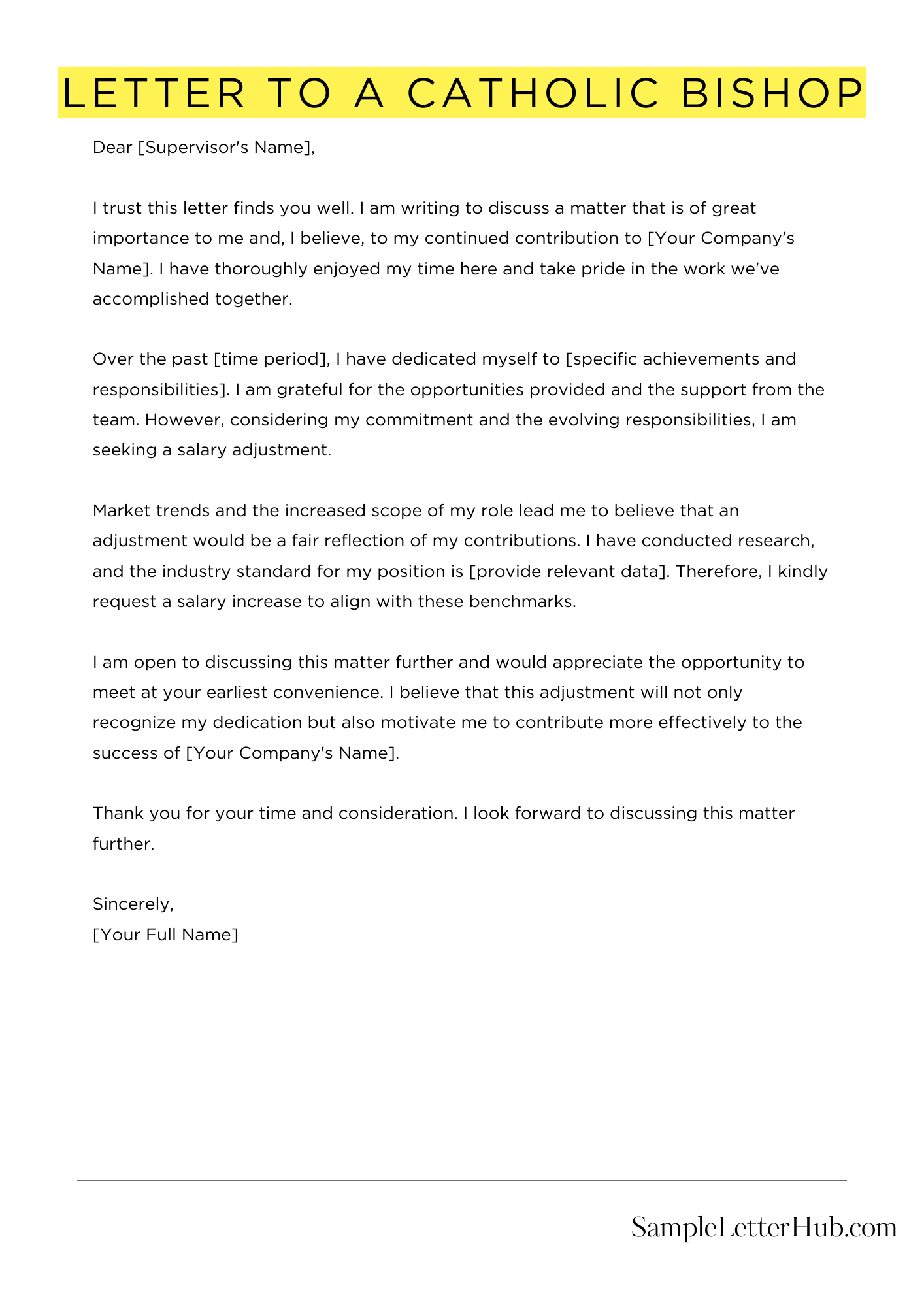Letter To A Catholic Bishop” is a formal letter written to a Catholic bishop. It is typically used to request guidance, ask for assistance, or express concerns. The purpose of this letter is to provide a clear and concise way to communicate with a Catholic bishop.
In this article, we will share templates, examples, and samples of “Letter To A Catholic Bishop.” These resources will provide you with a starting point for writing your own letter. We have included a variety of templates and examples to cover different purposes and situations.
Whether you are writing to request guidance, ask for assistance, or express concerns, we hope that these resources will help you to write a clear and effective letter.
Letter to a Catholic Bishop
Dear Bishop [Bishop’s Name],
I hope this letter finds you well. I am writing to express my concerns regarding the recent changes implemented within the diocese.
As a devout Catholic, I have been deeply affected by the decision to discontinue certain traditional practices that have been a cornerstone of our faith for centuries. The removal of Latin from the Mass and the introduction of more contemporary music have left me feeling disconnected from the sacredness of the liturgy.
I understand that the Church must adapt to changing times, but I believe that these changes have gone too far. They have eroded the sense of reverence and mystery that once characterized our worship. I fear that if we continue down this path, we risk losing the very essence of what makes Catholicism unique.
I am not alone in my concerns. Many other parishioners have expressed similar sentiments to me. We are all deeply saddened by the changes and feel that our voices are not being heard.
I humbly request that you reconsider the recent decisions and engage in a dialogue with the laity. Together, we can find a way to preserve our traditions while still embracing the necessary changes.
Thank you for your time and consideration.
Sincerely,
[Your Name]

How to Write Letter To A Catholic Bishop
Writing a letter to a Catholic bishop can be a daunting task, but it is important to remember that bishops are human beings just like you and me. They are busy people, but they are also committed to serving their communities. If you have a concern or a request, don’t be afraid to write to your bishop.
1. Start with a formal greeting
The traditional way to address a bishop is “Your Excellency.” You can also use “Dear Bishop [Bishop’s last name].”
2. State your purpose clearly
In the first paragraph of your letter, state your purpose for writing. Be clear and concise.
3. Provide details
In the body of your letter, provide details about your concern or request. Be specific and provide any relevant information.
4. Be respectful
Even if you disagree with the bishop, it is important to be respectful in your letter. Remember that he is a representative of the Church.
5. Be brief
Bishops are busy people, so keep your letter brief and to the point.
6. Close with a formal ending
The traditional way to close a letter to a bishop is “Sincerely yours in Christ.” You can also use “Respectfully yours” or “Yours in Christ.”
7. Include your contact information
Be sure to include your contact information so that the bishop can reach you if he has any questions.
FAQs about Letter To A Catholic Bishop
Q: How do I start a letter to a Catholic bishop?
Start by addressing the bishop by his title and last name, followed by “Your Excellency.” For example, “Your Excellency, Bishop Smith.”
Q: What should I include in the body of the letter?
The body of the letter should be clear, concise, and respectful. State your purpose for writing, provide any necessary details, and ask any questions you may have. Be sure to use formal language and avoid using slang or colloquialisms.
Q: How do I end the letter?
End the letter with a closing salutation, such as “May God bless you” or “In Christ’s love.” Then, sign your name and include your contact information.
Q: What is the proper way to address a bishop in person?
When addressing a bishop in person, use the title “Your Excellency” followed by his last name. For example, “Your Excellency, Bishop Smith.”
Q: What topics can I write about in a letter to a Catholic bishop?
You can write about a variety of topics in a letter to a Catholic bishop, including:
- Requesting guidance or advice
- Sharing your thoughts on a particular issue
- Thanking the bishop for his service
- Offering support or assistance
- Inquiring about a specific program or ministry

